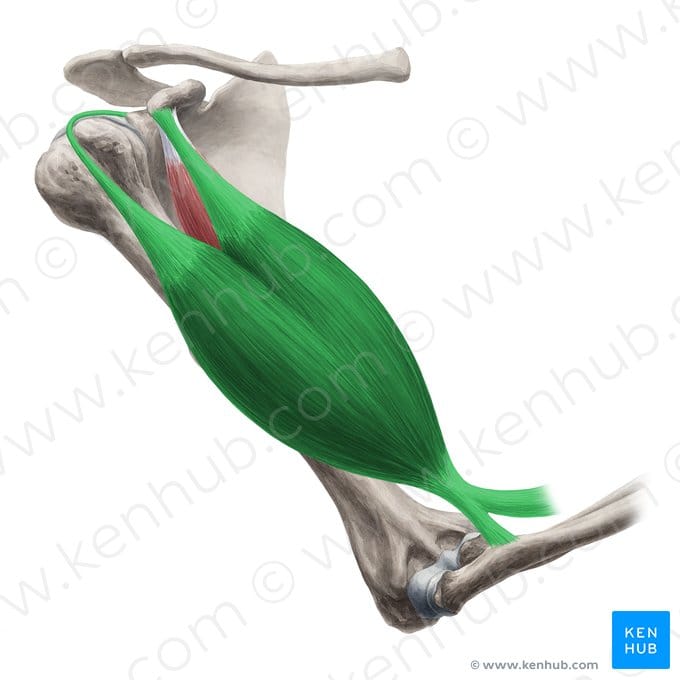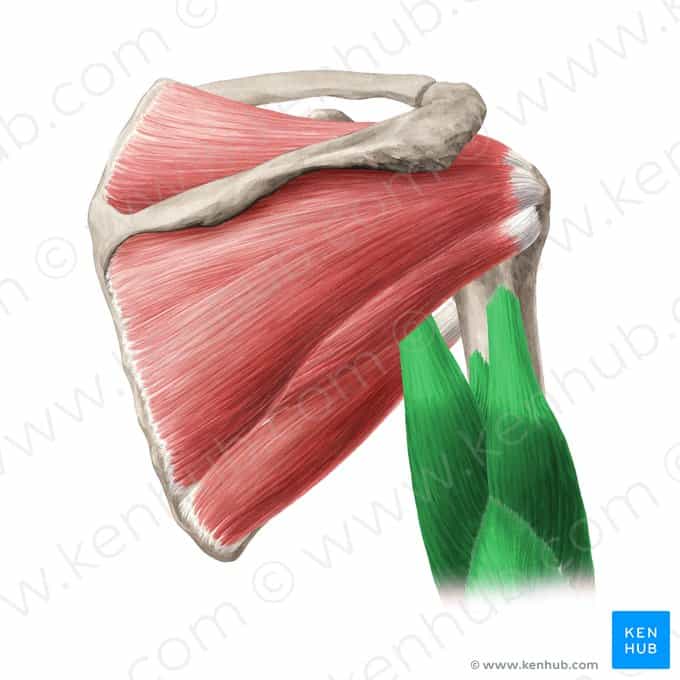Sculpting strong and well-defined arms involves a lot of dedication and strategic planning. Of course, one of the most important aspects of curating your arm workout is to choose the right exercises – otherwise, there’s no guarantee that you’re going to see the dramatic changes you want!
For everyone from beginners to bodybuilders, specific gym equipment can act as invaluable tools. This is because they offer more control, versatility, and lower injury risks than using free weights. But there’s one machine that stands out above all the others when it comes to bulking up your arms: the cable machine.
In this guide, we’ll walk you through some of the best cable machine arm exercises to help you transform your arms. Plus, we’ll discuss the right way to train and the anatomy of the major muscle groups you’ll want to pay attention to. By the time you’re done, you’ll be a cable machine aficionado!
Table of Contents
The 11 Best Arm Cable Exercises
- Cable wrist curls
- Cable overhead triceps extension
- Cable triceps pushdown
- Rope kickback
- Single-arm cable extension
- Cable biceps curl
- High cable curls
- Cable hammer curl
- Cable spider curl
- Cable concentration curl
- Seated cable bicep curl
Cable wrist curls
Benefits of cable wrist curls
Cable wrist curls offer a range of benefits that contribute to overall arm health and better physical performance. The major advantage of this exercise is that it boosts your grip strength and strengthens your forearms to reduce the risk of injuries during weightlifting, pull-ups, and similar activities.
Additionally, this is an isolation exercise that targets the forearm muscles so that you can effectively work the lower part of your arm when you’re building muscle.
How to perform cable wrist curls
- Adjust the cable machine to the lowest setting, attach a straight bar, and grab the bar with an underhand grip.
- Stand or sit facing the machine. If you’re standing, keep your feet shoulder-width apart.
- Move your hands so that they’re also shoulder-width apart and keep your back straight.
- Start with your arms fully extended in front of you and let the weight of the straight bar pull your wrists down.
- Breathe out and curl your wrists upward, keeping your forearms still. Remember to engage your forearms throughout the entire range of motion.
- At the top of the movement, squeeze your forearms before slowly lowering the bar back down.
To get a better idea of what this exercise looks like in practice, you can watch the video below:
How to program cable wrist curls
To program cable wrist curls for muscle building, you can follow the guidelines below:
- Weekly training sets: 8 to 25 sets per week
- Lighter loads (45%): 20 to 30 reps per set
- Moderate loads (45%): 10 to 20 reps per set
- Heavier loads (10%): Using heavier loads is completely optional and can be adjusted to suit your fitness goals. Generally, you’ll want to do around 5 to 10 reps per set.
Cable overhead triceps extension
Benefits of cable overhead triceps extensions
A cable machine is easy on your joints and can guide and control your movements to reduce the stress on your elbows, shoulders, and wrists. Additionally, cable overhead extensions are also less strenuous than other tricep exercises like skull crushers. Wondering why that is? Then check out our tricep extension vs skull crusher comparison guide.
Engaging all three tricep heads at once, also makes this one of the more comprehensive arm exercises. It’s particularly ideal as a medial head tricep exercise.
How to perform cable overhead triceps extensions
- Set up the cable machine by adjusting it to the lowest setting and adding the rope attachment.
- Grab the rope behind your head while you’re facing away from the pulley and lean forward slightly.
- Keep your upper arms aligned with your ears and pull on the rope, ending the movement with your arms straight in front of you.
- Slowly relax and gently guide your arms back behind your head to the starting position.
Colossus Fitness has a great video showcasing the correct movement and form for this exercise. You can check it out below:
How to program cable overhead triceps extensions
Ensure to include the cable overhead extension exercise (at least 6 to 25 sets) in your weekly workout routine to see a notable change in your triceps muscles. Aim for 2 to 5 sets of 5 to 10 reps with heavy weights and the same number of sets with 20 to 30 reps for lighter weights. Consider adding 4 to 12 sets with an average rep range of 10 to 20 for more moderate loads.
Not enough? See more tricep cable exercises.
Cable triceps pushdown
Benefits of cable triceps pushdowns
Cable tricep pushdowns effectively target several muscles in the upper body, including your abdominals, biceps, traps, and lats. But what makes it so great is that it’s one of the most effective long-head tricep exercises.
A cable machine is one of the best gym machines for arms. They are easily adjustable and provide guided movement through exercises like tricep pushdowns, making them ideal for different strength levels.
How to perform cable triceps pushdowns
- Set the machine to a lower weight and attach a straight bar.
- Grab the bar with an overhand grip and engage your core, keeping your elbows close to your sides.
- Stand with your feet slightly apart and breathe in as you push the straight bar down.
- Once your elbows are straight, breathe out and slowly bring the bar back up to the starting position.
If you want to learn how to perform tricep pushdowns correctly, be sure to watch this video from Muscle & Strength:
How to program cable triceps pushdowns
To reach your fitness goals and strengthen your triceps, tailor your workout program to include pushdowns. Aim for around 2 to 5 sets per week for light (20 to 30 reps) and heavy loads (5 to 10 reps), and an average of 4 to 12 sets of 10 to 20 reps for moderate loads.
Rope kickback
Benefits of rope kickbacks
Rope kickbacks on a cable machine are one of the best lateral head tricep exercises and help to improve your mind-muscle connection. This allows you to isolate your triceps effectively and consciously to form part of a targeted cable arm workout.
The cable machine gives you a more controlled range of motion, guiding you through the movement from start to finish. In turn, it minimizes the risk of injuring your upper arms and allows for more focused tricep activation.
How to perform rope kickbacks
- Adjust the cable machine to the highest position and attach a rope.
- Grab the rope and take a step away from the machine, facing the pulley.
- Keep your legs together and lean forward slightly, making sure to bend your knees a little.
- Lift your forearms to the starting position with your elbows bent before pulling the rope attachment down and behind you.
- Keep your arms straight at the end of the movement before slowly releasing the rope back toward your original position.
Want to learn how to control this movement for more efficient muscle building? This video from the legendary bodybuilder John Meadows will teach you everything you need to know (don’t worry, the video starts playing at the relevant timestamp):
How to program rope kickbacks
To get stronger, more muscular arms with rope kickbacks, it’s important to integrate them effectively into your existing cable arm workout routine. Try to use a mix of lighter loads (20 to 30 reps, 2 to 5 times a week), medium weights (10 to 20 reps, 4 to 12 times a week), and heavier loads (2 to 5 sets a week of 5 to 10 reps per set).
Single-arm cable extension
Benefits of single-arm cable extensions
Single-arm cable extensions are perfect for unilateral training and can help correct muscle imbalances in your arms. You can also tailor your reps and sets per arm.
These cable exercises are low-impact, meaning they place less stress on your joints while still providing effective muscle engagement. If you struggle with any joint sensitivities, then this could be a good arm workout for you.
How to perform single-arm cable extensions
- Connect a single handle to the cable machine, grip it, and stand with one foot in front of the other.
- Pull down the cable with one hand, making sure to keep your elbow and upper arm close to your side.
- Breathe out as you straighten your arm, making sure to squeeze your tricep throughout the movement.
- Pause before inhaling and moving your arm back up to the starting position.
- Repeat with the opposite arm.
For a visual representation of how to do this (and other) cable exercises, you can take a look at this video (don’t worry, the video starts playing at the relevant timestamp):
How to program single-arm cable extensions
For optimal cable arm workouts, you’ll need to tailor this exercise to suit your regime. Typically, you can use this information to program your single-arm cable extensions:
- Weekly sets: 6 to 25
- Lighter loads (25%): 2 to 5 sets of 20 to 30 reps
- Moderate loads (50%): 4 to 12 sets of 10 to 20 reps
- Heavier loads (25%): 2 to 5 sets of 5 to 10 reps
Cable biceps curl
Benefits of cable biceps curls
If you’re looking for beginner-friendly and versatile cable arm exercises, then the cable bicep curl is a great choice. Firstly, you can choose between either a straight bar attachment or an EZ-curl bar to make it more comfortable. Additionally, it effectively targets the bicep muscles for stronger and more toned upper arms.
How to perform cable biceps curls
- Adjust the cable machine to its lowest position and take a step back.
- Grab the straight bar or EZ-curl bar with an underhand grip and lean forward slightly with your elbows tucked into your sides.
- Keeping your upper arms stationary, inhale and slowly curl the bar upwards and squeeze the muscles.
- Breathe out and lower the straight bar again.
To learn more about performing a bicep cable curl, you can check out the video below (don’t worry, the video starts playing at the relevant timestamp):
How to program cable biceps curls
You can tweak your arm workout to include bicep curls by switching between load weights.
For strength, aim for 5 to 10 reps with heavier weights; for a balance of strength and hypertrophy, opt for 10 to 20 reps with a moderate load. To boost your endurance, go for 20 to 30 reps with a light load. You should also consider a weekly breakdown with 25% for light and heavy loads and 50% for moderate weights.
High cable curls
Benefits of high cable curls
Also known as crucifix curls, high cable curls are good for building a strong mind-muscle connection to precisely target the biceps. They’re also easy to perform, making them perfect for different strength levels.
Additionally, high cable curls are ideal for targeting the short head of the biceps brachii and are usually used by bodybuilders to make their upper arms more muscular. If you want to know about more short head bicep exercises, you should take a look at our comprehensive guide.
How to perform high cable curls
- Attach a single handle and stand with your side facing the cable machine.
- Spread your legs until they’re hip-width apart and grab the handle with one hand using an underhand grip.
- Make sure to keep your elbows bent and your back straight.
- Slowly curl the handle toward your head, keeping your elbows still.
- Squeeze your biceps and pause before releasing the position.
You can also do this cable arm workout with two machines to work both of your arms at once. You can watch how to do this here (don’t worry, the video starts playing at the relevant timestamp):
How to program high cable curls
To maximize the effectiveness of these cable arm exercises and see quicker results, aim for a weekly total of 8 to 20 sets. Just be sure to distribute them properly across the week! For example, 25% for lighter weights (20 to 30 reps), 50% for moderate loads (10 to 20 reps), and 25% for heavy weights (5 to 10 reps).
Cable hammer curl
Benefits of cable hammer curls
Cable hammer curls are fantastic long-head bicep exercises and provide constant tension throughout the entire range of motion. This makes the exercise more effective for muscle building and improving your strength while still being gentle on your wrists and elbows because of the neutral grip.
If you want a comprehensive exercise to add to your cable arm workout regime, hammer curls can help target your brachialis, brachioradialis, biceps, and forearms.
How to perform cable hammer curls
- Adjust the cable machine to the lowest position and connect the rope attachment.
- Facing the weight stack, stand with your feet slightly apart and a straight back.
- Lean forward and grab both of the handles with your hands facing one another.
- Pull your shoulders back and slowly curl the cable toward you.
- Pause and breathe out before releasing and returning to the starting position.
Mr. Supplement has a great video on how to perform these cable arm exercises, which you can find below:
How to program cable hammer curls
Cable hammer curls require a mix of light, heavy, and medium loads. You should aim for a total of 20 sets per week (depending on your workout routine), doing 20 to 30 reps per set for light weights, 10 to 20 reps per set for moderate weights, and 5 to 10 reps per set for heavy weights.
Cable spider curl
Benefits of cable spider curls
Cable arm exercises like spider curls offer you a wide range of motion, making it less likely that you’re going to injure or sprain your bicep muscles. This means you will need less time for rest and recovery between workouts.
Additionally, this cable machine exercise focuses on the biceps so that you can target and work this specific muscle. In turn, you’ll be able to bulk up your upper arm and increase your strength.
How to perform cable spider curls
- Adjust the cable machine and set it to its lowest position.
- Stand facing the machine and then lower yourself onto the incline bench with your feet flat on the floor and your chest against the bench. Make sure to keep your back straight rather than curling over the front of the bench.
- Put your arms out in front of you and grab the bar with an underhand grip.
- Curl the bar towards you, keeping your elbows stable and tucked in.
- Pause at the top of the movement and then slowly lower the bar back down.
Spider curls are easy to master and take your legs out of the movement so you can focus on working your arms. You can learn how to perform these cable arm exercises by watching this video:
How to program cable spider curls
Spider curls are easy to incorporate into your cable arm workouts, but you’ll need to program your routine effectively to maximize how effective it is.
To get the most out of this exercise, you’ll want to aim to do 20 to 30 reps with lighter weights and around 2 to 5 sets a week. For heavier loads, you can adjust this amount to 5 to 10 reps and perform a maximum of 5 sets a week.
With moderate loads, you can increase the reps to 10 to 20 reps per set and add around 4 to 10 sets to your weekly workouts.
Cable concentration curl
Benefits of cable concentration curls
Cable concentration curls play a really important role in toning and sculpting your biceps by activating both the long and short heads of the muscle. This exercise works more than just the biceps, though. Thanks to its full range of motion, it also activates other muscle groups like the triceps, brachialis, and brachioradialis.
So, by adding concentration curls into your regime of cable arm exercises, you can ensure that your workout is engaging the entire arm.
How to perform cable concentration curls
- Attach a single handle to the cable machine and adjust it until it’s around chest height.
- Grab the handle with an underhand grip. Your palm should be facing inward.
- Pull the weight diagonally across your chest to target your biceps and the opposite chest muscle.
- Make sure to engage your arms throughout the entire movement and slowly return your arm to the starting position.
- Repeat the exercise with the opposite arm.
Jim Stoppani has a great video on cable concentration curls that may help you perfect your form for quicker results. You can watch his video here:
How to program cable concentration curls
To achieve the results you’re looking for, you’ll need to know how to use this exercise to your advantage. Understanding how to add this activity (and other cable arm exercises you want to use) to your workout routine is the first step to improving your physique.
Ideally, you’ll want to distribute 8 to 20 sets across various loads – 25% to lighter weights (20 to 30 reps per set), 25% to heavier weights (5 to 10 reps per set), and 50% to moderate weights (10 to 20 reps per set).
Seated cable bicep curl
Benefits of seated cable bicep curls
Seated bicep cable curls are just like standard bicep curls on a cable machine – they’re just done sitting down, which takes your legs out of the movement and makes it easier for beginners to master. This difference ensures that there is constant tension throughout the entire range of motion and promotes upper arm strength and hypertrophy gains.
How to perform seated cable bicep curls
- Connect a straight bar attachment, face the weight stack, and sit down on the bench with your feet flat on the floor.
- Grab the bar with an underhand grip and keep a shoulder-width distance between your hands, making sure that you’re comfortable to avoid straining.
- Straighten your back and breathe out as you curl the bar upward.
- Keep your elbows close to your sides and squeeze your biceps before slowly returning to the starting position.
Rob Riches actually has an amazing video on these cable arm exercises. Be sure to check it out if you want to learn how to perform seated cable curls with the correct form:
How to program seated cable bicep curls
To incorporate this exercise into your workout routine, you’ll need to use a mix of light, moderate, and heavy weights. Ideally, you’ll want to perform around 2 to 5 sets (20 to 30 reps each) per week using lighter weights, and the same number of sets with 5 to 10 reps each for heavier weights.
However, moderate weights should be tweaked to around 4 to 10 times a week, with each set containing 10 to 20 reps.
How To Train Arms
Training your arms using cable arm exercises requires a lot of planning with several considerations you’ll need to keep in mind. If you don’t use a strategic approach, you may not get the results you’re after and your efforts in the gym can easily feel wasted. However, if you use these handy tips and suggestions on how to train your arms, you’re guaranteed better, faster results:
- Frequency: Make sure to train all of the major arm muscle groups (biceps, triceps, and forearms) around 2 to 3 times a week for the best chance at building muscle. Just remember to include a rest day between each training session to allow your muscles to recover!
- Number of reps and sets: Try to aim for a balanced volume of sets and reps. For example, you can perform 3 to 5 sets per exercise for both your triceps and biceps. Of course, to reach hypertrophy, you’ll want to focus on a moderate to high rep range for each of them. You should also consistently adjust the load you’re using to reach muscle fatigue.
- Choosing your exercises: To train the entire arm, you should try to incorporate different cable arm exercises.
- Intensity: Try to use a combination of light, moderate, and heavy loads in your workouts. By varying the intensity of your exercises, you can stimulate different muscle fibers and boost your muscle development.
- Rest and recovery: To avoid injury, strain, or plateau, you’ll want to take some time out for your muscles to rest and recover. Ideally, this should be around 48 to 72 hours a week (2 to 3 days every week).
- Progressive overload: Gradually increase the resistance or the load as you continue to train. This will help your muscles to adapt and grow as a direct response to the increased demands on them.
Arm Muscle Anatomy
Biceps brachii

Located on the front side of the upper arm, the biceps have two heads: the long head and the short head. These muscles work together for elbow flexion, which allows you to bring your hand toward your shoulder. Additionally, they play a role in supinating the arm (rotating the forearm outward).
Triceps brachii

The triceps muscles are at the back of your upper arm and have three heads: the lateral, long, and medial head. The primary function of the triceps is straightening the arm at the elbow joint so that you can create a pushing movement and keep your arms straight.
Brachioradialis

The brachioradialis is the muscle on the outside of the forearm. It’s responsible for flexing the forearm where it meets the elbow, which helps with movements like gripping or hammering.
Flexor carpi radialis

The flexor muscles are on the inside of the forearm and start at the elbow. These muscles work by flexing your wrist and moving your hand downward toward the inside of your arm.
Extensor muscles

Located in the back of the forearm, the extensor muscles work as the opposite to the flexor muscles and move your wrist backward (away from your arm). Additionally, these muscles help to move the wrist around, lending to its full range of motion.
Cable Arm Exercises FAQs
How often should you train arms?
The amount of time you spend training your arms using a cable machine depends on your fitness, strength levels, fitness goals, and several other factors.
However, the general rule of thumb for arm workouts is to train them around 1 to 3 times a week. And, if you want to increase this amount, you should be sure to factor in enough time to allow your muscles to recover properly.
At what intensity should arms be trained?
According to NASM’s evidence-based approach with science-backed results, optimal arm training involves a mix of moderate – 60% – 75% of your one-rep max (1RM) – and heavy (85% – 100% 1RM) loads for hypertrophy and strength, respectively. Generally, muscle building requires consistent training at a medium-level intensity, while strength training is best suited to high-intensity training.
What rep range should be used for training arms?
To effectively target your arms, you’re going to want to incorporate various rep ranges into your routine. For muscle building, a balanced rep range usually includes around 8 to 15 reps per set. However, this depends on what exercises you’re doing. Still, this range allows for a combination of muscle endurance and metabolic stress that contributes to more comprehensive arm development.
What types of exercises train arms?
Your arms can be trained through both compound and isolation exercises. Some examples of compound exercises include bench presses and rows for a general engagement of the arm muscles, while isolation exercises include activities like bicep curls and tricep extensions to focus directly on specific muscles.d